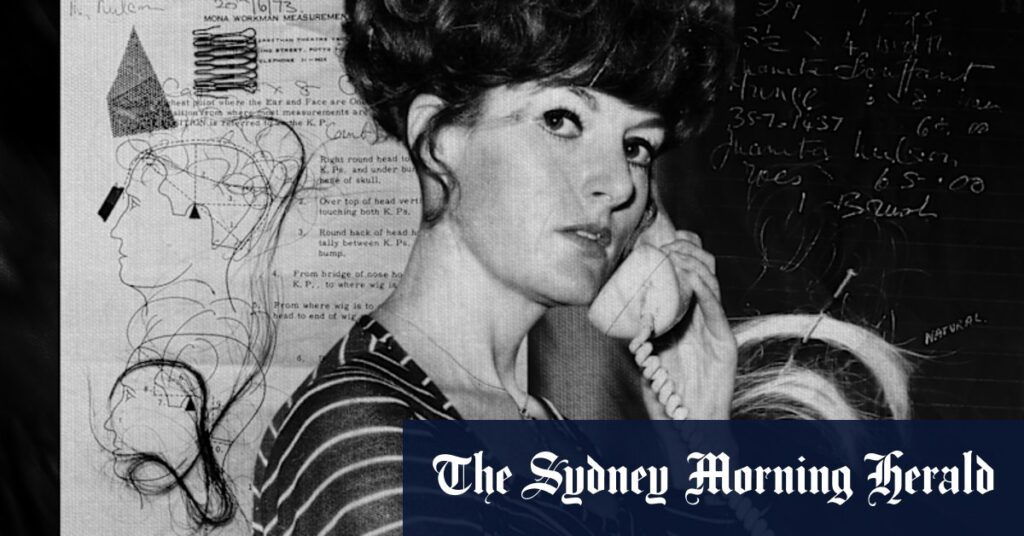Two dark brown locks of hair are pinned to a measurement chart over a sketch of a woman’s head, above which is simply written, “Juanita Bouffant”. A few more strands are attached to a diagram.
These locks belonged to Juanita Nielsen, the journalist and anti-development campaigner who disappeared on July 4, 1975.
On the anniversary of her unsolved murder, police have revealed the existence of the potential forensic evidence in an exclusive interview with the Herald.
Juanita Nielsen on the cover of her newspaper NOW.
The locks of hair were part of a sample for one of Juanita’s wigs made for her by Mona Workman, wigmaker to Opera Australia. Police took possession of them shortly after she disappeared, but their existence has remained secret – until now.
After five decades they remain the only trace of Juanita Nielsen, and no one has been brought to justice for her murder.
One day, she was there – a striking, strong, independent 38-year-old woman running a small but often feisty local newspaper in Kings Cross, NOW. The next day, she was gone. Disappeared. A $1 million reward remains unclaimed.
The locks provide poignancy to a case that has cast a long, dark shadow over the administration of justice in NSW, right up to the then-police commissioner, the late Fred Hanson, who oversaw the removal of the detective leading the initial investigation.
After so many years, the questions remain: why was Juanita killed – what was the motive? Who stood to gain?
There’s been no shortage of theories: she had documents, a dirt file, on powerful people; she had tape recordings revealing corruption; she had information about a crooked merchant bank and its links to the Griffith drug trade; she was treading on the toes of a notoriously corrupt NSW police officer; she was getting in the way of high-rise development in Victoria Street, Kings Cross.
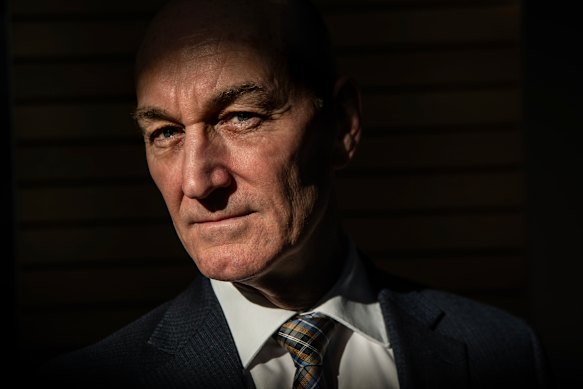
Nigel Warren has searched for Nielsen’s killer for 27 years.Credit: Steven Siewart
At the time of Nielsen’s disappearance, a young boy by the name of Nigel Warren was nine years old. He is now Detective Inspector Nigel Warren, Homicide Squad, Unsolved Homicide Team, and for the past 27 years he’s had carriage of the investigation into Juanita Nielsen’s unsolved murder.
Having joined Homicide in 1998, he soon found himself assigned to following a lead on the Nielsen case. “Upon reviewing the boxes of archive material, I was captivated by the person Juanita was and her passion for her community, the bravery she displayed to challenge developers, which as we discovered, brought her under notice by the criminal element of Kings Cross,” he told the Herald.
He’s doggedly pursued leads and tip-offs and snippets of information, some of them promising, some of them bordering on the bizarre. Like the one that suggested Nielsen’s body might have been disposed of in 1975 via a NSW university’s anatomy unit. Suffice to say it came to nothing.
Then there was the tip-off about the old Walton’s store at Penrith. It sounded promising because it was not far from where her shoulder bag and its contents were found strewn along the F4 (now M4) freeway. Juanita’s body was said to have been hidden in one of four drainage pits, which led to Warren arranging an operation to drain them, describing it as a long shot. Nothing was found.
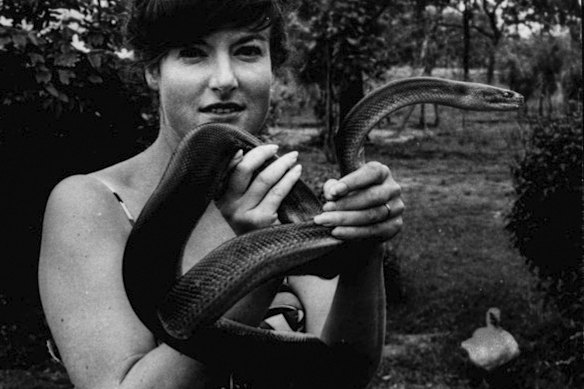
Nielsen was fearless. She is seen here with a python on a trip to Darwin.Credit: David Farrell
He’s waded through the transcript of the 13-week inquest in 1983 into her death, the countless witness statements, the thousands of pages of police running sheets and intelligence reports. It’s a case, he says, which involves an “enormous” volume of records and “mountains of information”.
It’s difficult, if not impossible, to even remember it all. Some basic facts are not in dispute. There’s no doubt that on the morning of July 4, 1975, Nielsen
walked the short distance from her home in 202 Victoria Street to the Carousel Cabaret in Kings Cross. She went at the behest of the club’s night manager, Eddie Trigg, who had told her he wanted to do some advertising in NOW, the local newspaper that Nielsen published and edited. Trigg confirmed to police she had been at the Carousel.
He told them he gave Nielsen $130 in cash, payment for an advertisement for a supposed upcoming “businessman’s lunch” at the club, and that she wrote a receipt and then left the premises. He produced receipt with a torn edge as evidence. Trigg also told detectives he’d been instructed to talk to Nielsen by his boss, the Carousel’s manager, Jim Anderson.

Bank cheques were among Nielsen’s belongings found strewn in the grass near a bridge over the F4 near Penrith.Credit: Fairfax Media
Anderson managed not only the Carousel but also other clubs for Sydney underworld figure Abe Saffron, who owned the properties. Both men were friends with Frank Theeman, who was determined to demolish historic terraces in Victoria Street and replace them with high-rise apartments. In the interview with the Herald, Inspector Warren agreed to discuss for the first time possible motives for the murder. He said he believed there were “two main motives”. He said one clearly linked back to the Victoria Street development proposed by Theeman and opposed by residents, unions and Nielsen. The second related to “the so-called documents that Juanita supposedly had”.
The documents – so the story goes – revealed evidence of wrongdoing on the part of someone known only as “the big boss”. Inspector Warren said whether that “big boss” was Saffron or Anderson was “a bit of a mystery”.
Did Nielsen ever have a dirt file on Saffron or Anderson? The theory has been around since the 1970s – but Nigel Warren is sceptical. For a start, he says Juanita never mentioned the existence of any documents to her boyfriend and business partner, David Farrell, who lived with her at 202 Victoria Street.
At the time, she and Farrell had become increasingly concerned about anonymous calls and threats for her to stop opposing the redevelopment. In mid-June, Juanita had introduced the strict practice of informing Farrell of her daily movements. Nor is there evidence that she mentioned incriminating documents to anyone else. None have ever been found.
As Warren points out, if she did have a “dirt file”, why would she take it to a meeting at a Kings Cross nightclub with Trigg, a man she had never met? “Why wouldn’t she say something to David Farrell, why would she take the risk to go there?” he said. After all, if the documents existed, she couldn’t be killed until the elusive “big boss” had them in his possession.
He told the Herald he tended to disregard the documents as a motive. “I still struggle with that because there’s no reason for her to not tell someone [about the documents], why would she hide that?” And, he says, Victoria Street is a more compelling motive.
To understand why, it’s necessary to delve into a slice of Sydney’s turbulent past.
In the early 1970s, Theeman had bought up old mansions and terraces from 55 to 115 Victoria Street, with a plan to bulldoze the lot and build high-rise apartments in a $400 million redevelopment along the ridge overlooking the city – equivalent to $3.5 billion today.
He dreamt that the development would become Sydney’s version of Sutton Place, a leafy refuge of elegance on New York’s east side, and a haven for the wealthy. To do that, he had to get rid of the people who were living there, paying cheap rents.
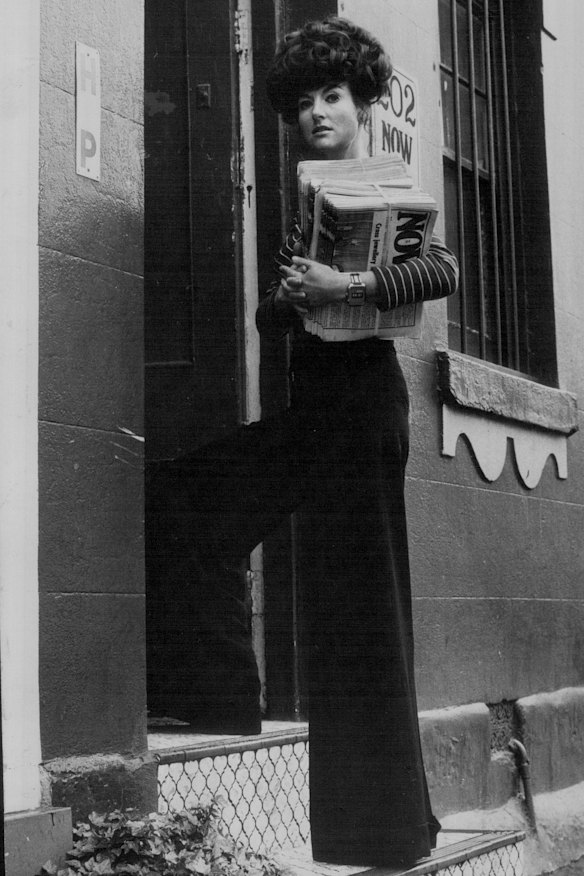
Juanita Nielsen at her office in Potts Point in 1974. Credit: Nigel Scot McNeil
Some left freely, but many others who had called Victoria Street home for years, in some cases decades, refused to go. The battle for Victoria Street became violent, with residents being stood over, threatened and sometimes forcibly evicted by the thugs Theeman hired.
In April 1973, the convenor of the Victoria Street Resident Action Group, Arthur King, was kidnapped from his flat, blindfolded and thrown into the boot of a car and held for three days. Luckily, he lived to tell the tale – but immediately left the street.
Into this mix came the NSW Builders Labourers’ Federation, which imposed green bans – effectively bringing any demolition or construction to a grinding halt and causing Frank Theeman no end of frustration.
Nielsen, who was born into the Mark Foy’s retail dynasty, stood with the residents and through her newspaper, NOW, voiced her strident opposition. When the green bans were finally lifted through the takeover of the state union by the corrupt federal BLF union – offering Theeman some hope – Nielsen enlisted the support of another union, which once again stopped the development.
By this time, Theeman’s company, Victoria Point Pty Ltd, was losing $3000 a day in interest – more than $1 million a year, and today equivalent to $9 million a year. In February 1975, Theeman, seeing Nielsen as the major stumbling block, tried the personal touch.
He took her to lunch, picking her up in his Mercedes-Benz. They dined at the upmarket American Club. Theeman tried to persuade her to change her mind. The lady was not for turning. Theeman complained that financially, he was about to “bleed to death”. His architect, Neville Gruzman, told co-author Peter Rees that in June 1975, when he raised Juanita’s campaign, Theeman had said to him, “Don’t worry about that, I’ll take care of it.”
Around this time, Theeman paid Jim Anderson $25,000, ostensibly to help establish his son, Tim Theeman, in a nightclub. He gave Anderson a cheque – something he almost immediately regretted. According to evidence at the inquest into Nielsen’s disappearance, Theeman tried to get the cheque back.
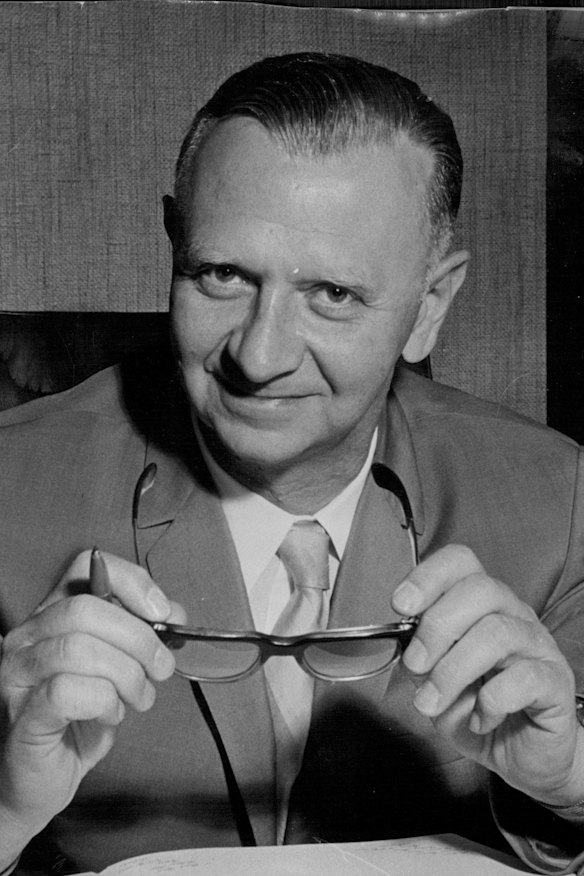
Frank Theeman in 1968.
On May 26, 1975, he beseeched Abe Saffron to loan him $25,000 in cash, saying he had “done a very silly thing”. Saffron said he didn’t keep that sort of money at home. Anderson cashed the cheque – equivalent to $220,000 today. The nightclub never happened.
Inspector Warren said it was clear that Theeman was “losing a lot of money” and that his meeting with Juanita in February had failed to resolve the problem. “There’s a motive there, the financial motive.” He said it was “also pretty clear that he [Theeman] has had a close connection with Jimmy Anderson”.
It also emerged that Trigg had been trying to lure Juanita to meetings in the days before July 4. This was substantiated by one of Trigg’s associates, Shayne Martin-Simmonds.
“If you look at the evidence in relation to the movements by Trigg and Martin-Simmonds, prior to the fourth of July, there’s extensive evidence to show they were trying to meet Juanita.
“It’s interesting to note that Eddie Trigg had nothing to do with Juanita Nielsen prior to that; all of a sudden he’s got an interest in Juanita.”
The person behind the “sudden interest” was Jim Anderson, Theeman’s friend. Anderson had history in helping Theeman get rid of problems. At the Nielsen inquest, evidence was presented indicating that he was behind the abduction of Arthur King. Warren points to the remarkably candid statement made by Trigg’s friend Martin-Simmonds when he was finally interviewed by the original investigators in 1977, more than two years after the disappearance.
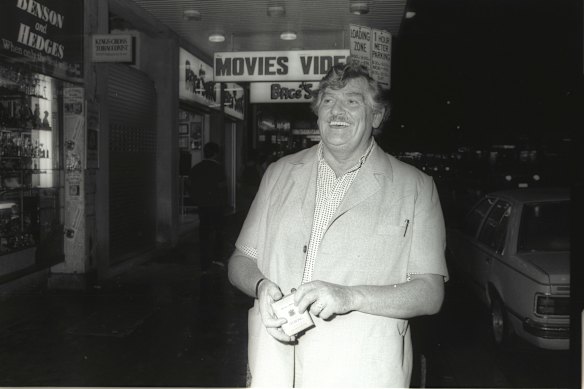
JIm Anderson in the Cross in 1983.Credit: Fairfax Photographic
Born in Auckland in 1946, Martin-Simmonds was mesmerised by the Cross and wanted a job in the clubs. Already a small-time crim with convictions for stealing, he saw Trigg as his link to Anderson and was soon on the payroll. In his statement, Martin-Simmonds confirmed that in the days leading up to Juanita’s disappearance, he and Trigg had planned to abduct her because there were “people or persons who wanted to talk to this woman”.
For his troubles, Martin-Simmonds would get $200. He told police either he or Trigg would grab her by the arms and put a hand over her mouth. “Or a pillowslip over the head,” he said. “No real rough stuff, no gangster stuff.”
If Nielsen resisted, they would bundle her into Trigg’s car and put her on the floor and cover her with a blanket. “She would have to be tied up,” Martin-Simmonds said. The plan was to take her to the Travelodge Motel in Camperdown where the people who wanted to see her would be waiting. Who were these people? Martin-Simmonds said he didn’t know.
When they tried to abduct her from her home in Victoria Street on Monday, June 30, they found Farrell at home. The plot collapsed.

Eddie Trigg’s mugshot after he was arrested and charged with conspiring to abduct Nielsen in 1977.
It was then, Martin-Simmonds freely admitted to the detectives, that Trigg invented the advertising story to entice Nielsen to the Carousel a few days later on July 4. There was no businessman’s lunch. He agreed that he was at the Carousel with Trigg on July 4 when Juanita arrived. But he knew nothing about her going missing.
In 1977, Trigg and Martin-Simmonds were charged – not with murder, but with conspiring to abduct Nielsen in the days leading up to her disappearance. Martin-Simmonds was found guilty by a jury. Trigg did a runner to the United States but was eventually brought back to Australia.
To everyone’s surprise, he pleaded guilty and was sentenced to three years’ jail. His plea meant he never faced cross-examination in court. He couldn’t be asked about why Anderson was so insistent on him meeting Nielsen. He couldn’t be asked a whole lot of things.
Nigel Warren says that while there’s general agreement about Nielsen arriving at the Carousel, it’s what happens after her arrival that is where things get “problematic”. “It’s an interesting case in that from this point on we start over time to get varying versions, versions that are changed, versions that are extended.”
Marilyn King, Eddie’s girlfriend, was one of those who initially failed to tell the full story of what she saw at the club that morning. But as detectives will often tell you, over time people’s lives and circumstances change, relationships end. Someone unwilling to talk, perhaps out of love, loyalty or fear, might now, years later, feel like unburdening their soul.
By 2004, the world once inhabited by Marilyn no longer existed. Marilyn was now identifying as a man and had taken the name Monet King and was a born-again Christian. Interviewed in New Zealand by Inspector Warren in 2004, King made a statement incriminating Trigg in Nielsen’s murder.
It’s never been made public, but King also spoke at length to Peter Rees, author of the book Killing Juanita, who located him after an extensive search.
In that conversation, King recalled going to the Carousel on the morning of July 4 in a jealous fit – Trigg had not been home the previous night. Was he seeing someone else?
King recounted arriving at the club around the time Trigg was meeting with Nielsen in the VIP Lounge. Martin-Simmonds stood outside the door, refusing to let him in, saying Trigg was busy.
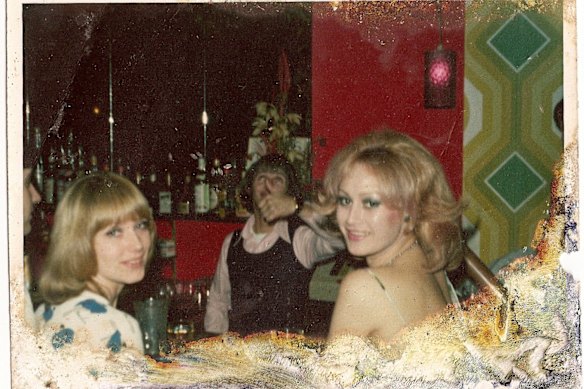
Eddie Trigg behind the bar at the Carousel Cabaret, where Juanita Nielsen was last seen alive. Marilyn (later Monet) King is on the right.
King waited downstairs with receptionist Loretta Crawford before deciding to go and buy some takeaway chicken. Going downstairs he noticed that Trigg’s big Dodge Phoenix, which had been parked outside the side entrance that led up to the VIP Lounge, was gone, and Martin-Simmonds was standing on a nearby corner.
What alarmed King was neither Trigg nor Martin-Simmonds had come down the mains stairs. For some reason, they had clearly come down the side stairs and not been seen. Why, he wondered. A couple of hours later, as he waited and chatted with Loretta, King noticed that Eddie was frantically beckoning to him from downstairs and left.
As they drove home, King noticed spots of blood on Trigg’s shirt. His fist was swollen and bruised, a blackish-yellow colour, and he was in pain. Trigg insisted Nielsen had gone home after their meeting.
At the apartment King said he asked: “How could she go home if you punched her?”
Trigg replied: “What you don’t know won’t hurt you … she didn’t feel a thing.”
King noticed a piece of paper in Trigg’s shirt pocket and asked what it was. Trigg explained it was for his alibi – “in case the police ask me why she was at the Carousel”. King saw that it was a receipt. “Then, to my horror, I noticed blood on it too. Eddie cut that part off. Burnt it, I think.”
Inspector Warren told the Herald he believed that King was a credible witness. Which is why he arranged for him to come to Australia, to go to the Royal Exhibition Hotel in Surry Hills on July 1, 2005, and sit down in the front bar and talk about old times with Trigg.
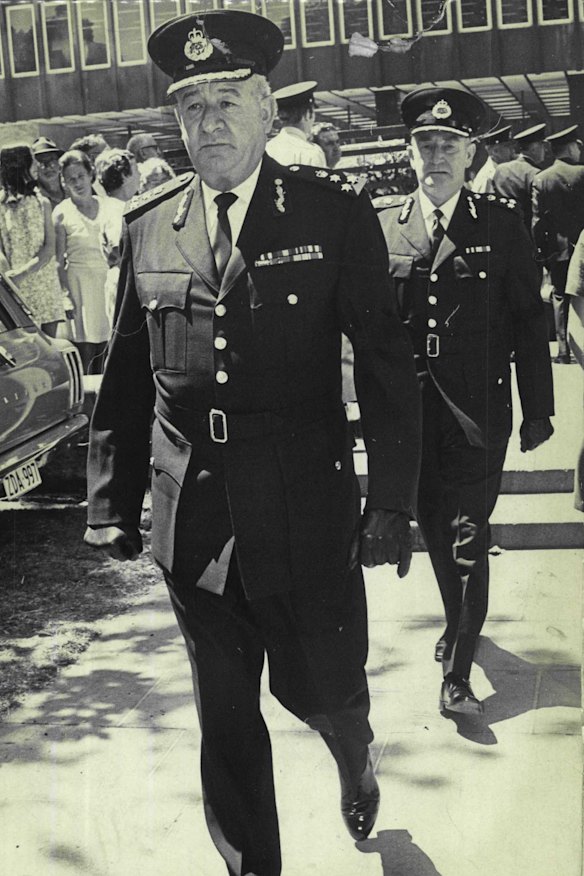
Commissioner Fred HansonCredit: Fairfax Media
Looking back, it was the last throw of the dice to get a confession. Monet King is now dead, as are all the other significant players in this long-running, tragic and complicated saga.
The initial NSW Police investigation in the ’70s was criticised for not expeditiously following up leads and interviewing witnesses. The 1983 inquest into Nielsen’s disappearance found it may have been inhibited by an atmosphere of corruption, “real or imagined”. The Herald understands that in fact, the lead investigator, Detective Sergeant Karl Arkins, was removed from the case with the approval of the then-commissioner Fred Hanson, now widely viewed as corrupt.
Arkins’ removal came just days after he had interviewed Theeman, during which he questioned the developer about his association with Anderson. Theeman said the relationship was through his son, Tim, and went back several years. Because Tim had been in trouble with drugs he had come to “an arrangement” with Anderson to set him up in a partnership in a club.
The “arrangement” involved the cheque for $25,000 and Theeman was anxious that it be kept confidential. Sacking Arkins meant that he did not have the chance to pursue the connection further. This was a clear message to investigating police not to focus on Victoria Street.
Loading
Theeman later confided to his architect, Gruzman, that Hanson was “a good friend”. Warren would not be drawn on criticism of early police inquiries, saying he was “not worried” about what history has said.
“It was a different time, different way of policing. You’ve got to remember that policing back then was heavily reliant on witnesses, and fingerprints or physical evidence. There was no forensic evidence, like DNA, there was no CCTV, no mobile phones.
“Our purpose and our responsibility and our role is to find ways to try and solve a case and that’s what we focus on.”
The veteran detective says the best police can now hope for is that, one day, Nielsen’s remains are found.
If that happens, they will seek to match the remains to DNA extracted from the locks of hair – to this day the only physical remains of a remarkable woman shockingly cut down in the prime of her life.
John Silvester lifts the lid on Australia’s criminal underworld. Subscribers can sign up to receive his Naked City newsletter every Thursday.
Read the full article here
